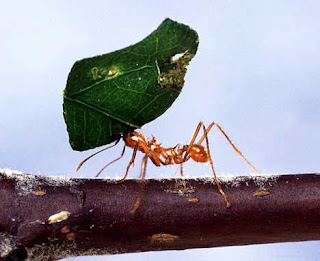The Tri-Nations rugby competition has just finished with a victory by Australia in the final game against New Zealand, played last Sauturday. This constitutes quite a triumph for the Australians, since they had not won this triangular competition, which also involves Souuth Africa, for 10 years. They did not win all of their games however and were soundly beaten by the All Blacks in New Zealand.
The last game between Australia and New Zealand was very good to watch and held some lessons, but without perhaps all the clues for the bigger contest to come, which is the World Cup that will be held in New Zealand between September 9th and October 23rd. Whilst Australia derserved their victory, I felt at times that some of the New Zealander key players (Carter in particular) were kind of holding back to avoid serious injury so close to this competition that means so much to them. You have to remember 2 things here: New Zealand (aka "the All Blacks", since thay play usually in black) are clearly, on the basis of results between major rugby nations going back a long way, the best team in the world, and this has been particularly evident in recent years. Yet thay have only won the World Cup (which takes place every 4 years in a different country) on one occasion, which was in 1987, the first year that it was held on their territory. I think they should have won the 1985 edition, which was won by South Africa in South Africa, with considerable political pressure involved. Failures in key matches, such as the quarter final lost to France in 2007, or the semi-final lost also to France in 1999, have blighted their World Cup record to date. So the pressure will lie heavily on their shoulders in front of the home crowd, and it looks to me as if they have treated the recent Tri-Nations games as a series of practice games that didn't count as much as what is to come. They sent a second team to South Africa, and did not look too good against Australia in the last game.
South Africa have clearly also played the Tri-Nations games tactically in view of the World Cup. They only won one of them, symbolically betaing New Zealand at home, having lost to Australia at home the week before. But they sent second teams to Australia and New Zealand and were trounced there. On the other hand, Australia looked like the only team that went full-out at this competition, and they also look to be a serious contender as the number one outsider after the All Blacks who must have the favourite's position.
And what about the Northern Hemisphere nations, and Argentina who does not yet compete regularly in any major tournament apart from the World Cup? Or indeed the Pacific Island teams who also have their chances in some of the games?
The Pacific Island teams (Fiji, Samoa and Tonga) can be redoutable in a single game through their spectacular and creative (and often quite violent) rugby. But it is hard to see any one of them getting further than the quarter final level, on account of lack of depth in the squads, and the fact that they so rarely play together. Argentina is a great rugby nation but their team lacks in collective experience as well, and does not look as good as the one that did so well in the 2007 World Cup. Their opening game against England on September 10th could be an interesting test of their form and capacities.
From the American continent there are also teams from Canada and the USA.
As to the European teams, apart from Russia, Gerogia and Romania about whose teams I do not know a lot, one has to say that England and France look to be easily the best. France recently beat Ireland twoce in preparatory games, but England lost one of their games against Wales, also beating Ireland in a third game. The English attack has looked sterile, although they have plenty of strength on the physical side and in scrums and line-outs. France, as always is a bit of an enigma and quite unpredictable. They can play superbly in key matches, and are feared fro this by New Zealand. They have the players to go far, and heve been well prepared this year. Beside these two teams, I do not see Scotland, Wales or Ireland getting beyond the quarter finals.
On the basis of all this, the logical top teams would be New Zealand, Australia, England, France, and South Africa. The 4 semi-finalists are most likely to come from these five. But then rugby is not really about logic, is it?

























































